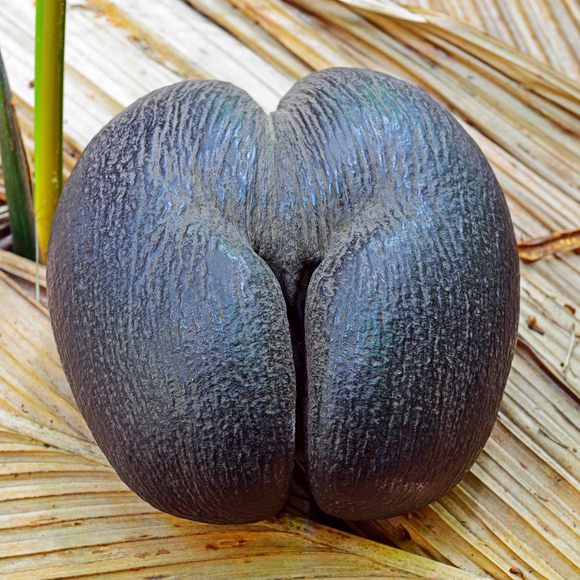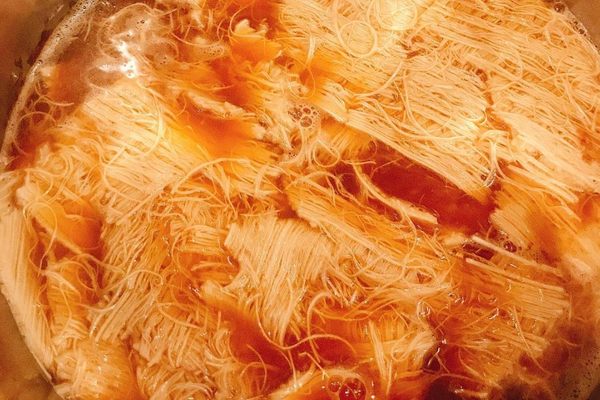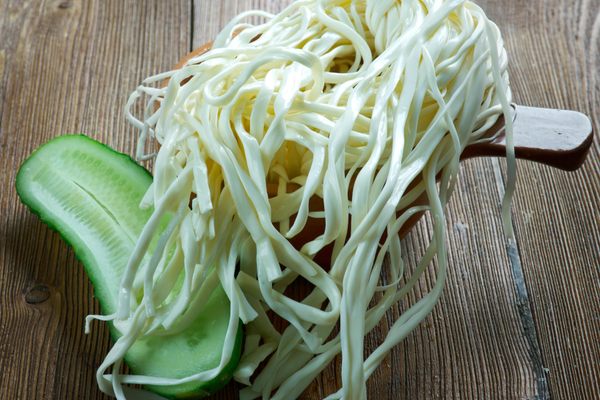The seed of the Coco de Mer is the largest in the world. Each one weighs about the same as three bowling balls. When foragers harvest the fruit early—while the seed is still forming—it contains a milky jelly that tastes like a sweet, slightly citrusy coconut with the texture of soft Turkish delight. And yet, for something so delicious, only a handful of people have ever eaten it.
Coco de Mer palms are incredibly rare, growing naturally on just two islands in the Seychelles, an archipelago off the coast of East Africa. The government strictly monitors these trees, which the IUCN classifies as endangered. People with a Coco de Mer palm growing on their land must follow rules: the seeds may be given as gifts, traded, or eaten, but money cannot be exchanged.
The few shops that are licensed to sell the seeds receive just a limited quantity. Even then, they’re not sold as food—they’re decoration. Vendors saw the seeds in half, hollow them out, and glue the husks back together. Why are the seeds a popular ornament? They have a distinctly suggestive shape, bearing a striking resemblance to buttocks on one side and female genitalia on the other, even down to a tuft of hair in the expected place. (It is hardly surprising that some people consider them a powerful aphrodisiac.)
In 2014, the Seychelles island of Praslin held its first culinary and arts festival, with the Coco de Mer taking center stage. Chefs mixed it into ice cream, bread, mousse, and other treats. The use of this rare ingredient attracted both Seychelles residents and visitors from all over the world. Though there was another festival in 2015, the Coco de Mer was not advertised as part of the menu. It may be a long time before the world has another opportunity to taste the forbidden fruit.
Written By
 Faith Roswell
Faith Roswell
Sources
- www.iucnredlist.org/details/38602/0
- www.britannica.com/plant/coco-de-mer
- www.newscientist.com/article/dn26930-the-secret-of-the-worlds-largest-seed-revealed/
- news.bbc.co.uk/2/hi/programmes/from_our_own_correspondent/9538059.stm
- www.seychellesnewsagency.com/articles/1306/A+taste+of+the+forbidden+fruit+-+Seychelles+coco+de+mer+at+the+centre+of+Praslin%27s+first+culinary+and+arts+fiesta
- www.thespruce.com/what-is-the-worlds-largest-seed-3269795
- books.google.com/books?id=WaJBAAAAQBAJ&pg=PA116&lpg=PA116&dq=eat+coco+de+mer+seed+flavor&source=bl&ots=rrShlWBQ8h&sig=NeYdeeIhqef-pSHjjbp9NTPGXwQ&hl=en&sa=X&ved=0ahUKEwj9mcyB087bAhWpxYMKHSlvASo4ChDoAQhmMA0#v=onepage&q=eat%20coco%20de%20mer%20seed%20flavor&f=false













